Death's Head Hawk-moth Acherontia atropos
Family: Sphingidae. Subfamily: Sphinginae
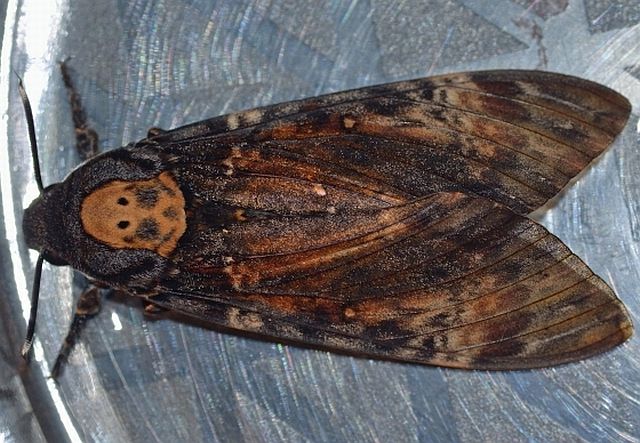
© BluTuna
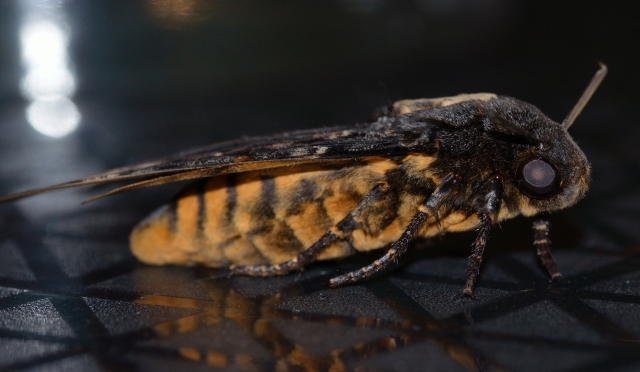
© BluTuna
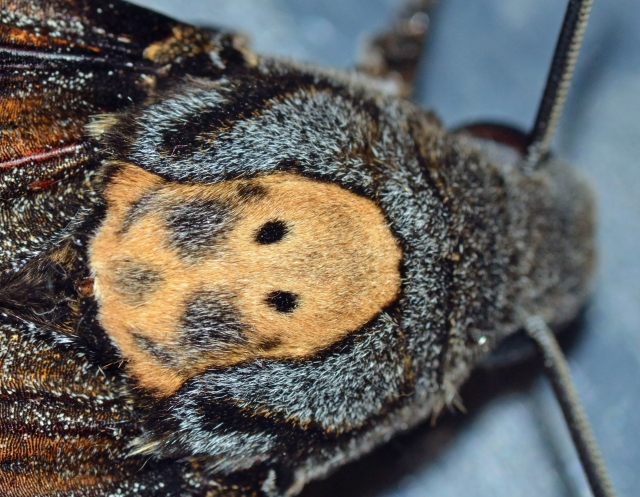
© BluTuna
Description
Acherontia atropos is a bulky large hawk moth with a wingspan of 90–130 mm, being the largest moth in some of the regions in which it occurs. The adult has the typical streamlined wings and body of the hawk moth family, Sphingidae. The forewings are cryptic brown and grey with slight yellow wavy lines; the hindwings are yellow with some wide brown waves. The most distinctive feature is the creamy-yellow mark on the thorax, resembling a skull-and-cross-bones symbol. The hairy proboscis is short and thick. The abdomen has yellow and black bands.
The fairly large caterpillar is bright yellow or green with blackish stripes with distinctive dots on the sides. Mature larvae measure 120 to 130 mm long. Their bodies are yellow, green, or brown with a large horn toward the rear. The pupa is shiny, reddish brown, and measures 75.7 to 80.0 mm).
Distribution
Acherontia atropos occurs throughout the Middle East and the Mediterranean region, much of Africa down to the southern tip. It invades western Eurasia frequently, although few individuals successfully overwinter.
Habitat
The death's head hawk moth lives in dry and sunny locations, especially open shrubby habitats.
Behaviour
It rests during the day on trees or in the litter, holding the wings like a tent over the body.Adults are known to raid bee hives in search of honey.
The moth has the ability to emit a loud squeak if irritated. The sound is produced by expelling air from its proboscis. It often accompanies this sound with flashing its brightly marked abdomen in a further attempt to deter its predators.
Life cycle
There are several generations of Acherontia atropos per year, with continuous broods in Africa. In the northern parts of its range the species overwinters in the pupal stage. Eggs are laid singly under old leaves of Solanaceae: potato especially, but also Physalis and other nightshades. However it also has been recorded on members of the Verbenaceae, e.g.
Lantana, and on members of the families Cannabaceae, Oleaceae, and others. The larvae are stout with a posterior horn, as is typical of larvae of the Sphingidae. Most sphingid larvae however, have fairly smooth posterior horns, possibly with a simple curve, either upward or downward. In contrast,
Acherontia species and certain relatives bear a posterior horn embossed with round projections about the thicker part. The horn itself bends downwards near the base, but curls upwards towards the tip.
The newly hatched larva starts out a light shade of green but darkens after feeding, with yellow stripes diagonally on the sides. In the second instar, it has thorn-like horns on the back. In the third instar, purple or blue edging develops on the yellow stripes and the tail horn turns from black to yellow. In the final instar, the thorns disappear and the larva may adopt one of three color morphs: green, brown, or yellow. Larvae do not move much, and will click their mandibles or even bite if threatened, though the bite is effectively harmless to the human skin. The larva grows to about 120–130 mm, and pupates in an underground chamber. The pupa is smooth and glossy with the proboscis fused to the body, as in most Lepidoptera.
Links:
http://en.wikipedia.org/wiki/Acherontia_atropos
http://www.biodiversityexplorer.org/lep ... tropos.htm
http://www.africanmoths.com/pages/SPHIN ... tropos.htm
Acherontia atropos - Tripod;
Natural History Museum;
JRank Articles: Death's Head Hawk Moth
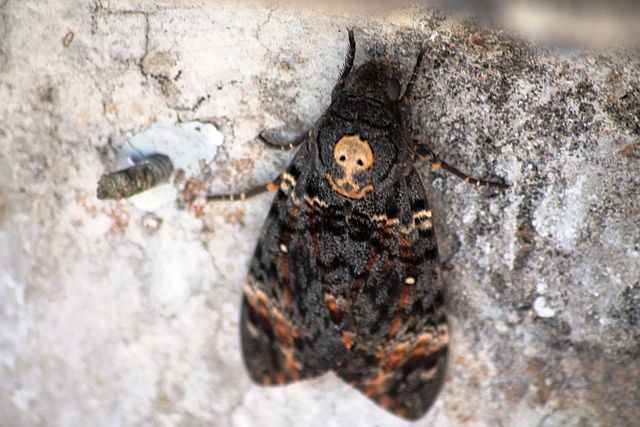
© pooky
Lake Kariba
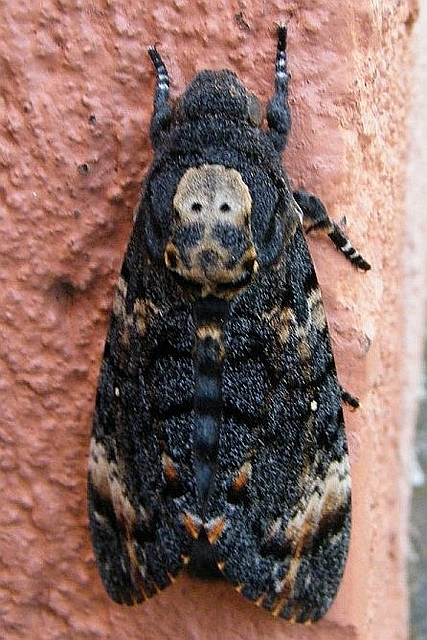
- Acherontia atropos.jpg (275.94 KiB) Viewed 3132 times
Nelspruit, South Africa © Richprins
 © mposthumus
© mposthumus © Richprins
© Richprins © mposthumus
© mposthumus © Richprins
© Richprins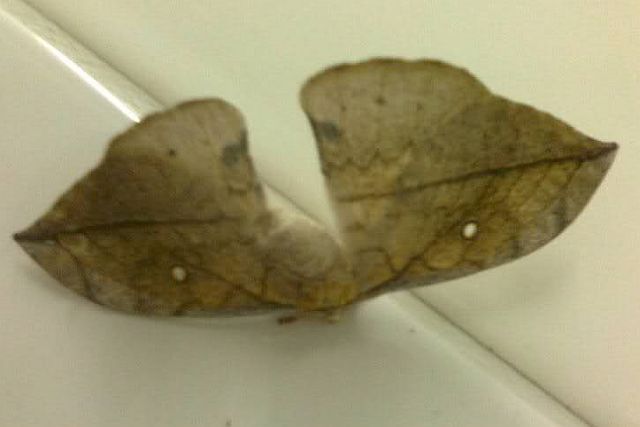 © Richprins
© Richprins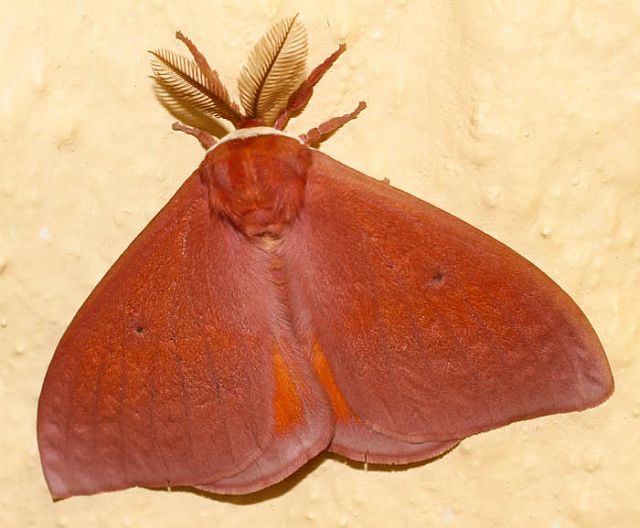 Male © Super Mongoose
Male © Super Mongoose © BluTuna
© BluTuna © BluTuna
© BluTuna © BluTuna
© BluTuna © pooky
© pooky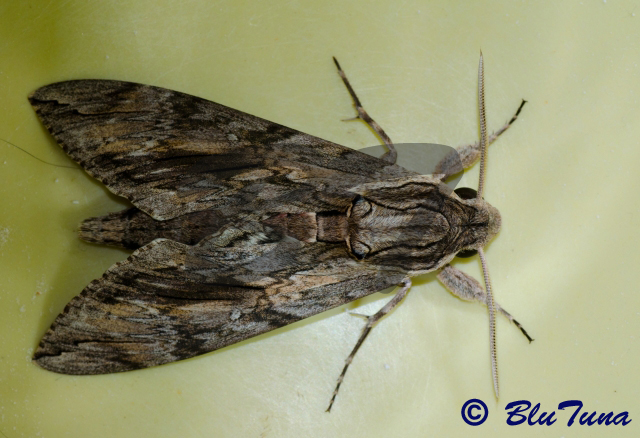 © BluTuna
© BluTuna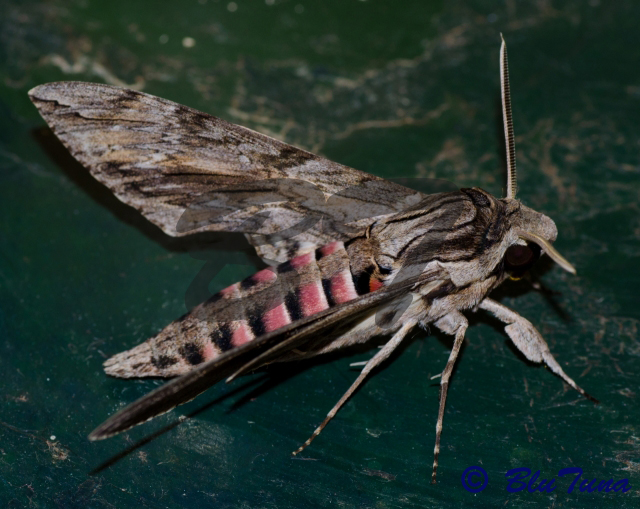 © BluTuna
© BluTuna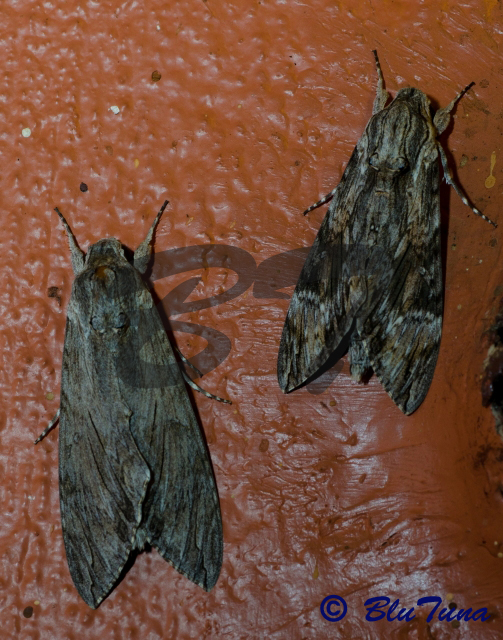 © BluTuna
© BluTuna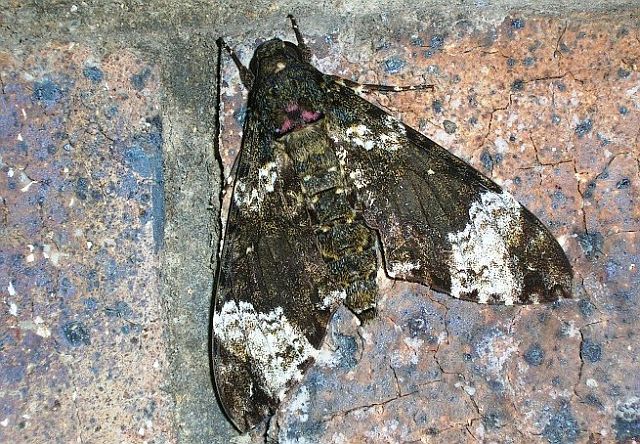 © The Spotted Genet
© The Spotted Genet © arks
© arks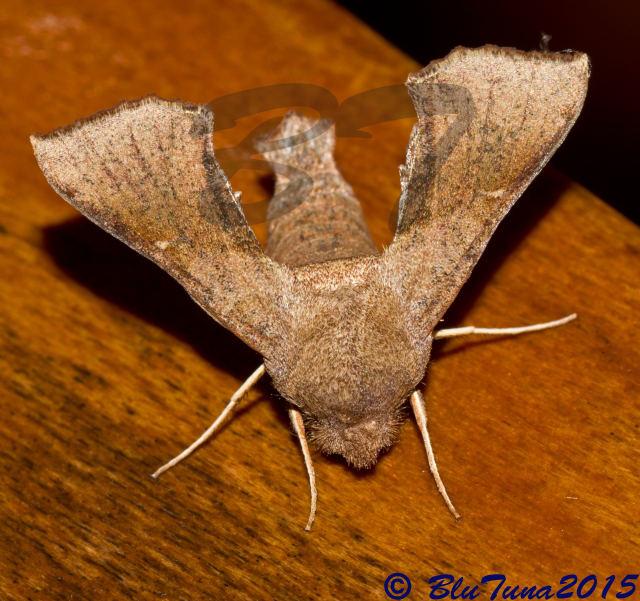 © BluTuna
© BluTuna